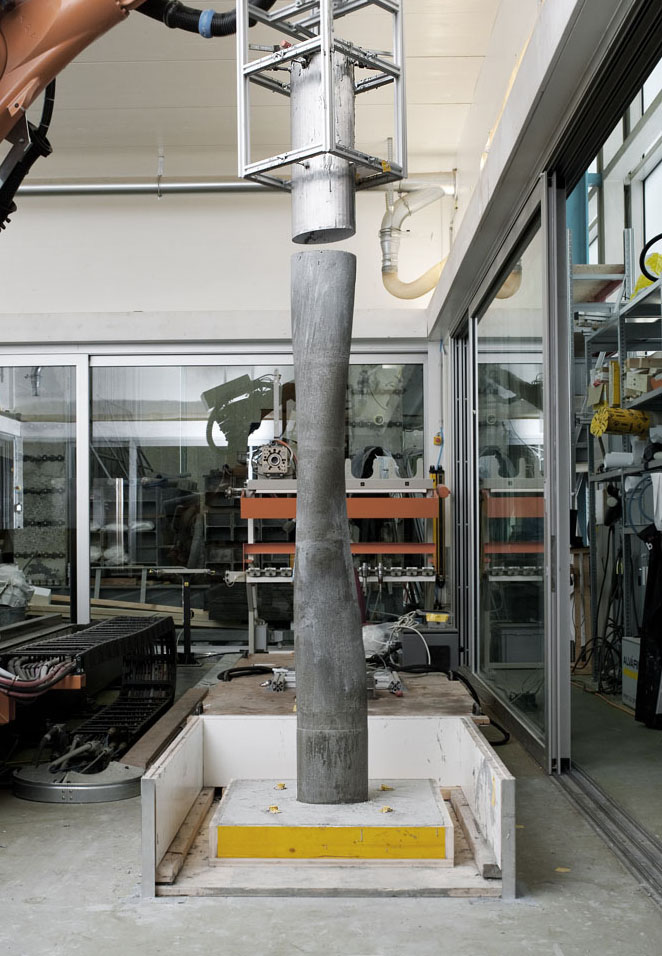
Lloret, Ena, Amir R. Shahab, Mettler Linus, Robert J. Flatt, Fabio Gramazio, Matthias Kohler, and Silke Langenberg. 2015. “Complex Concrete Structures: Merging Existing Casting Techniques with Digital Fabrication.” Computer-Aided Design 60 (March): 40–49. https://doi.org/10.1016/j.cad.2014.02.011.
Over the course of the 20th century, architectural construction has gone through intense innovation in its material, engineering and design, radically transforming the way buildings were and are conceived. Technological and industrial advances enabled and challenged architects, engineers and constructors to build increasingly complex architectural structures from concrete. Computer-aided design and manufacturing (CAD/CAM) techniques have, more recently, rejuvenated and increased the possibilities of realizing ever more complex geometries. Reinforced concrete is often chosen for such structures as almost any shape can be achieved when placed into a formwork. However, most complex forms generated with these digital design tools bear little relation to the default modes of production used in concrete construction today. A large gap has emerged between the possibilities offered by the digital technology in architectural design and the reality of the building industry, where actually no efficient solutions exist for the production of complex concrete structures. This paper presents construction methods that unfold their full potential by linking digital design, additive fabrication and material properties and hence allow accommodating the construction of complex concrete structures. The emphasis is set on the on-going research project Smart Dynamic Casting (SDC) where advanced material design and robotic fabrication are interconnected in the design and fabrication process of complex concrete structures. The proposed fabrication process is belonging to an emerging architectural phenomenon defined first as Digital Materiality by Gramazio & Kohler (2008) or more recently as Material Ecologies by Neri Oxman [1].
Photography: © Christian Breitler, DFAB ETH Zürich